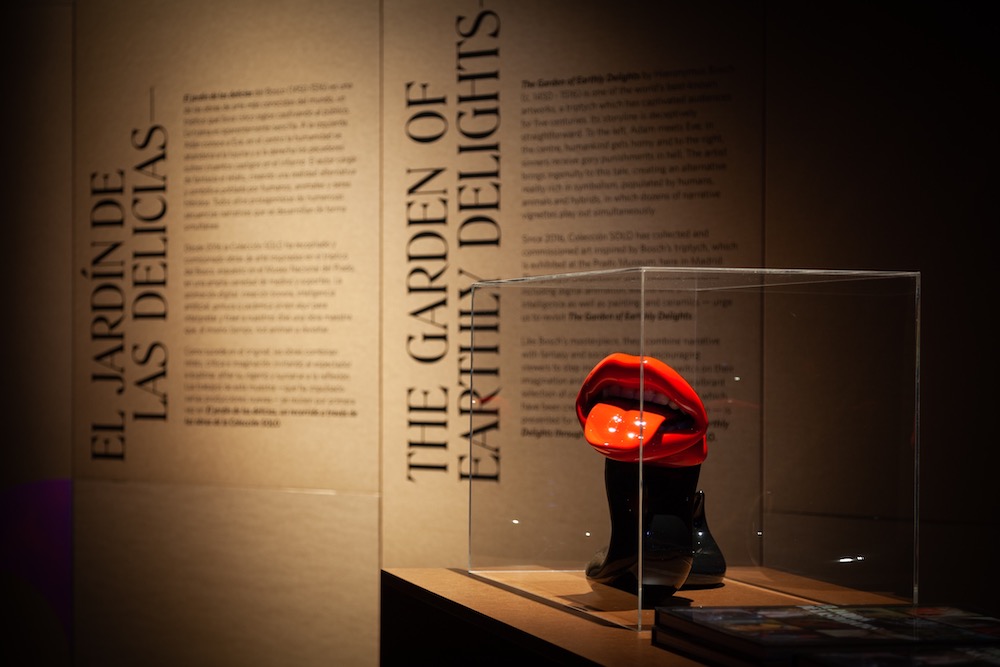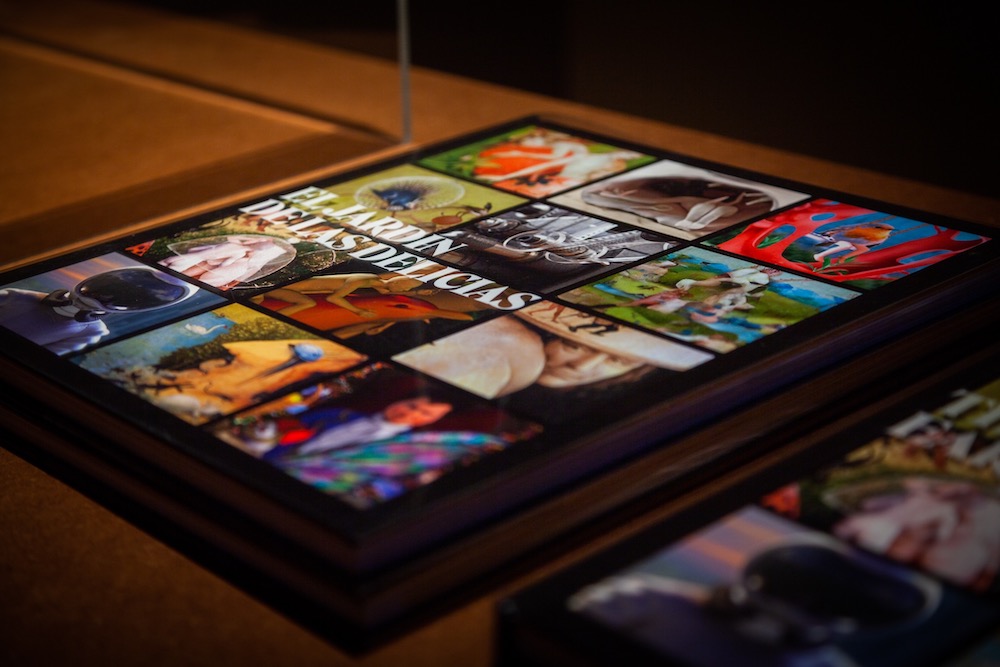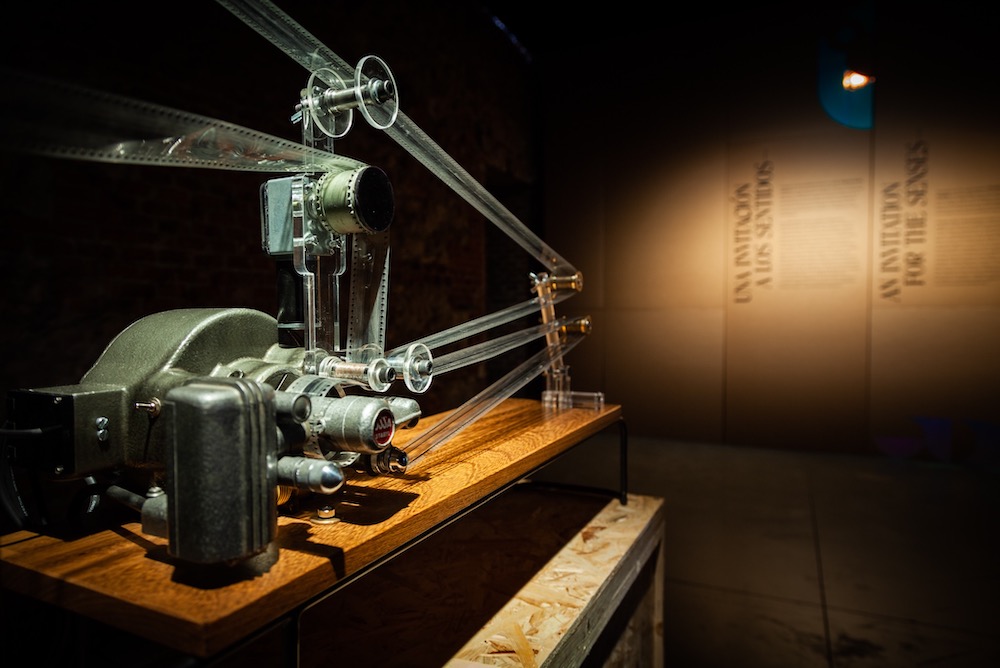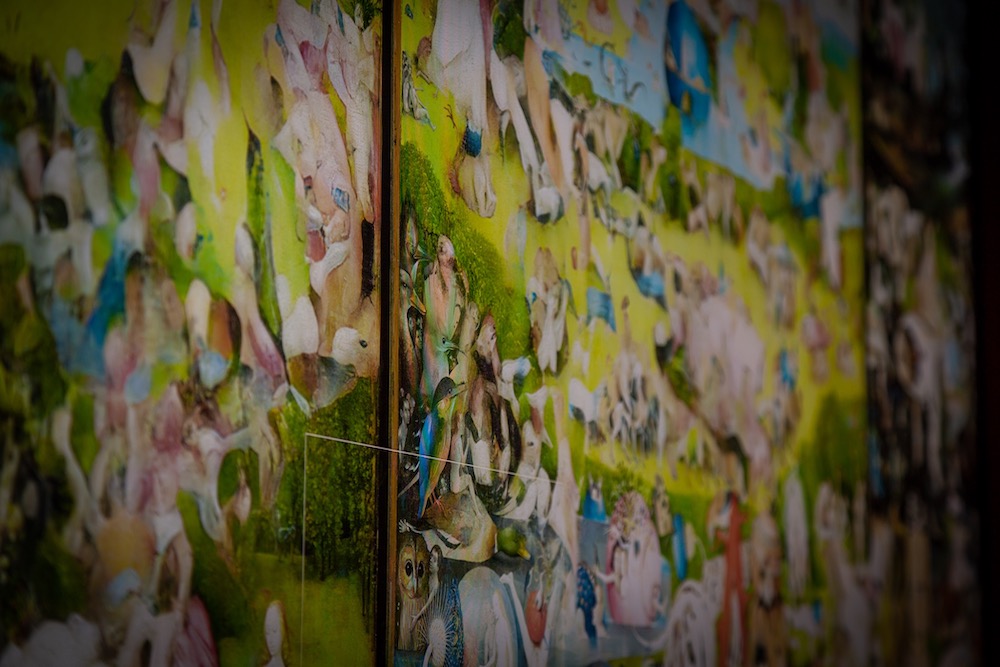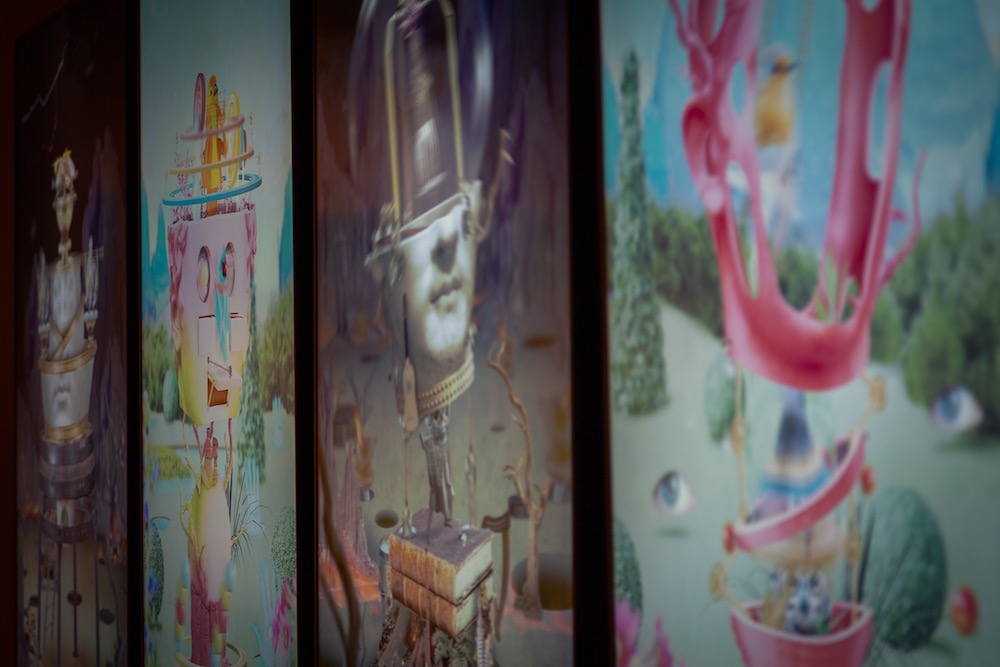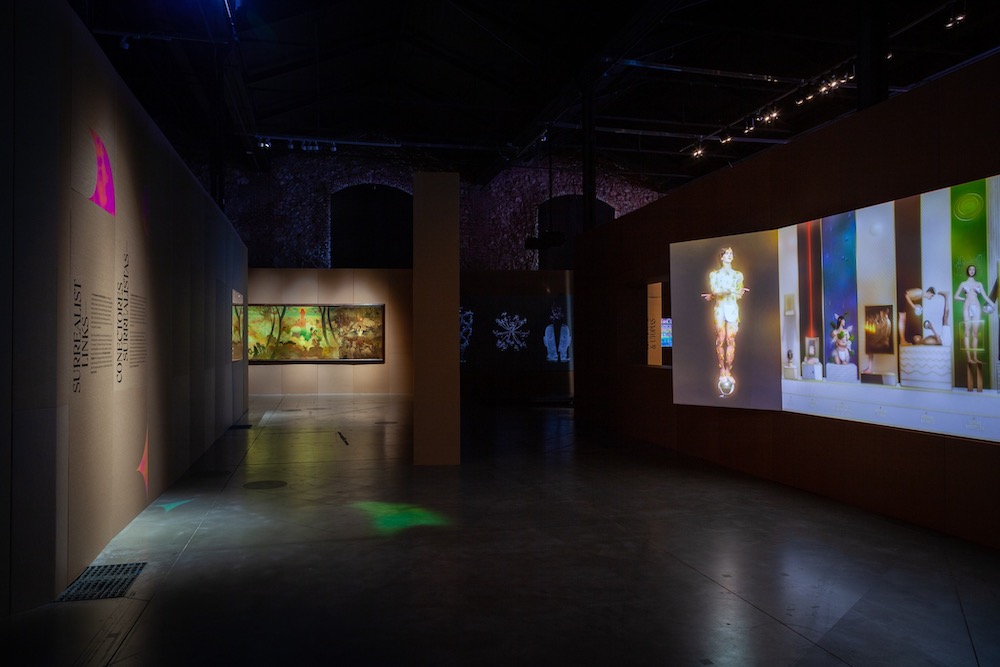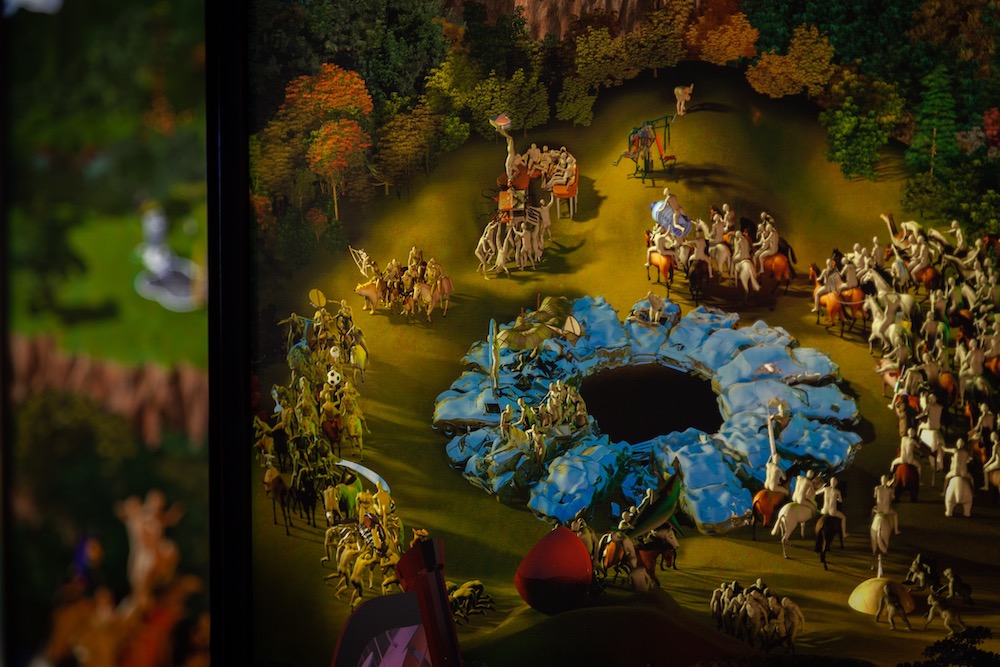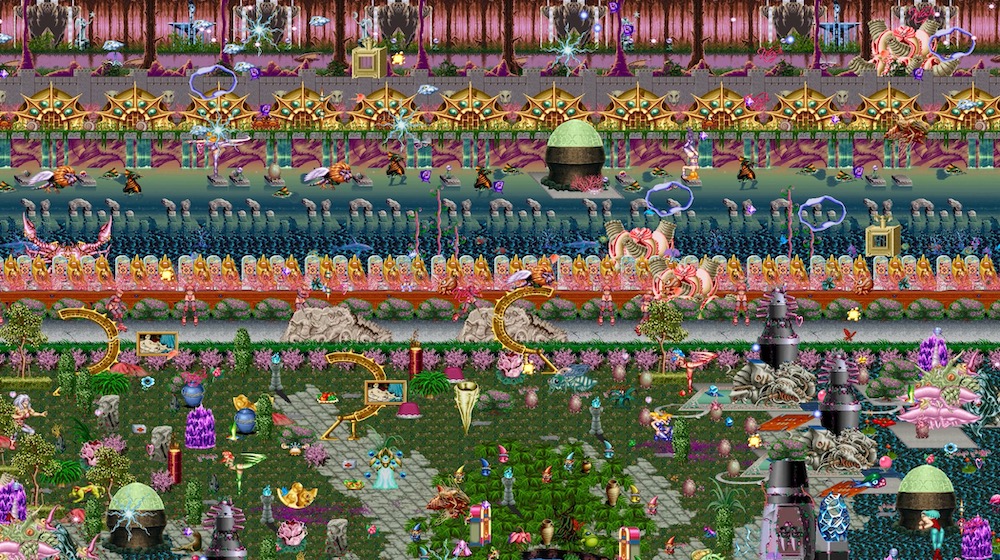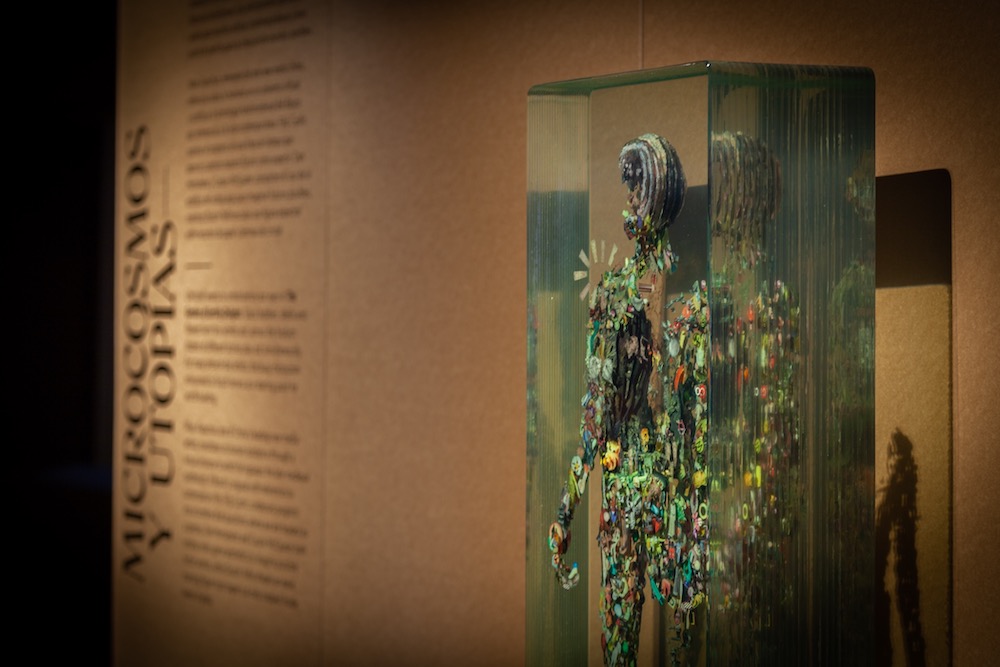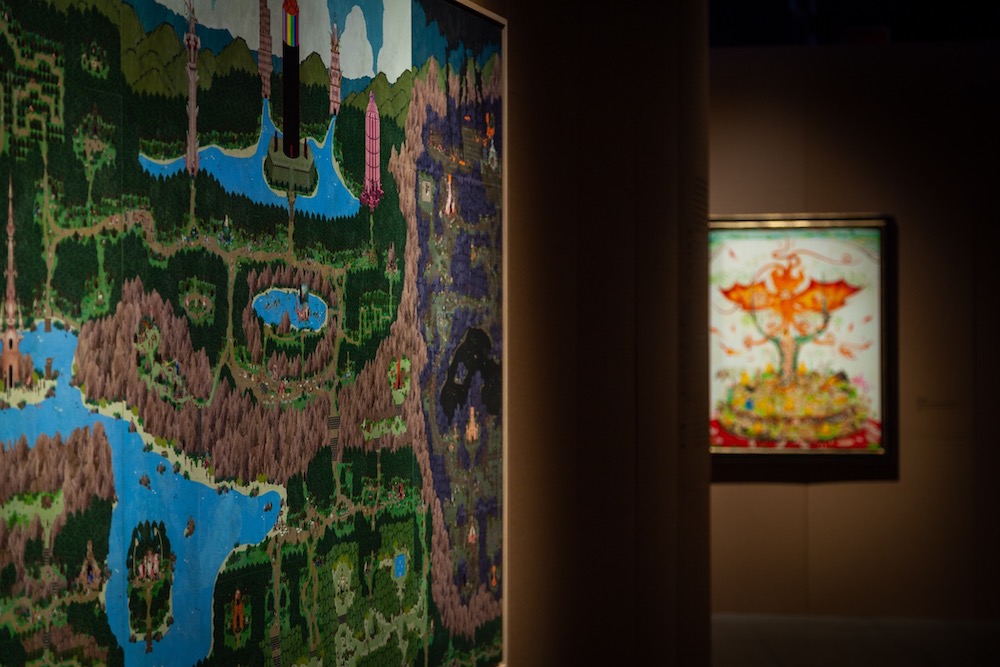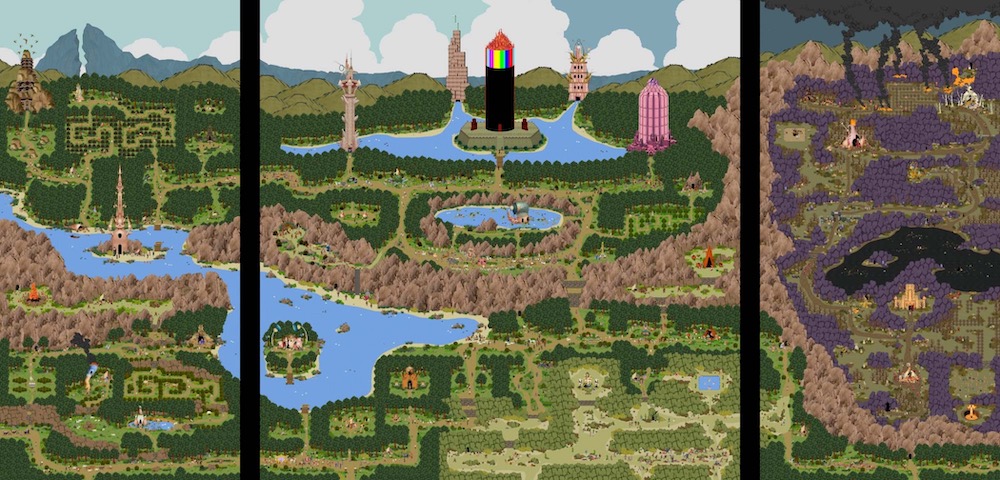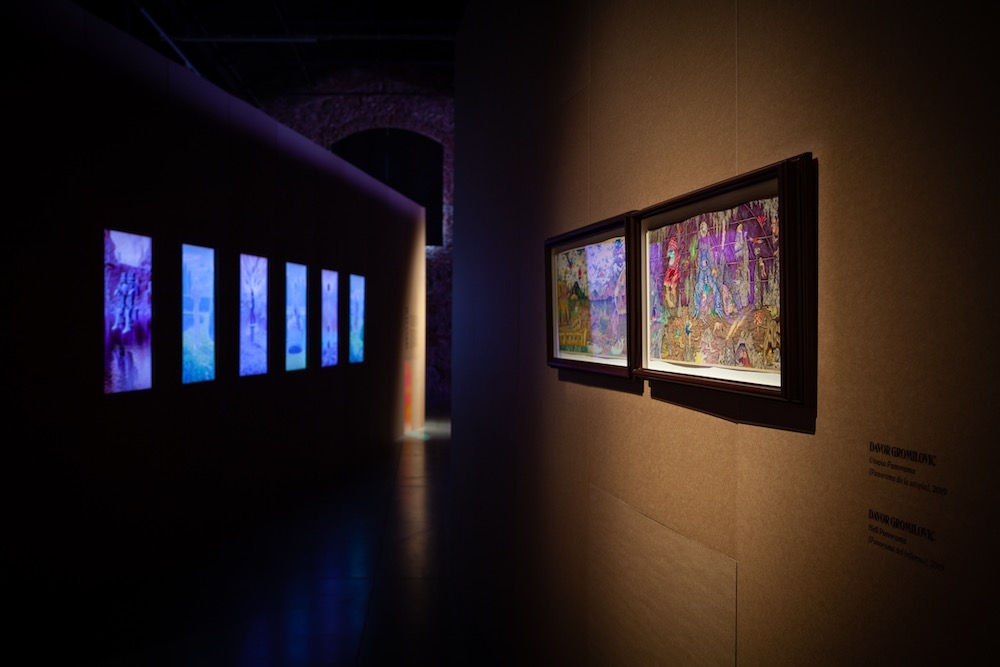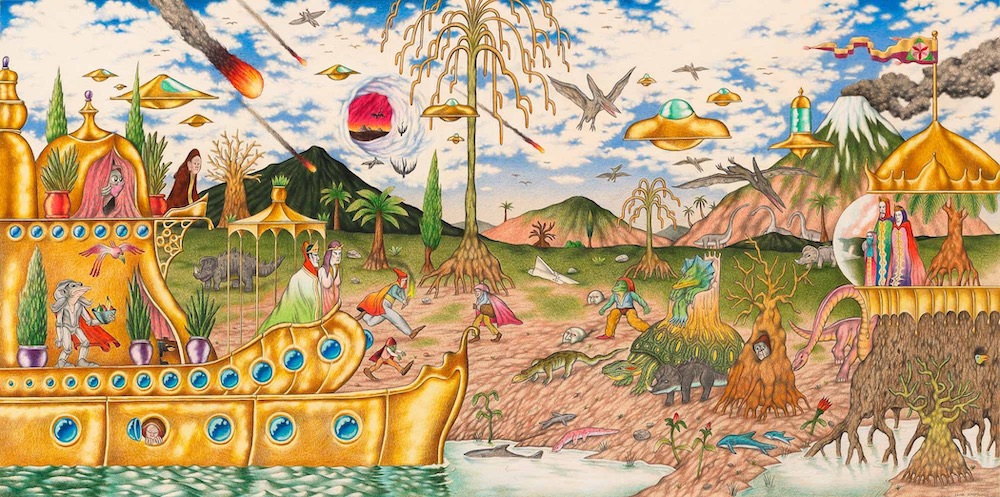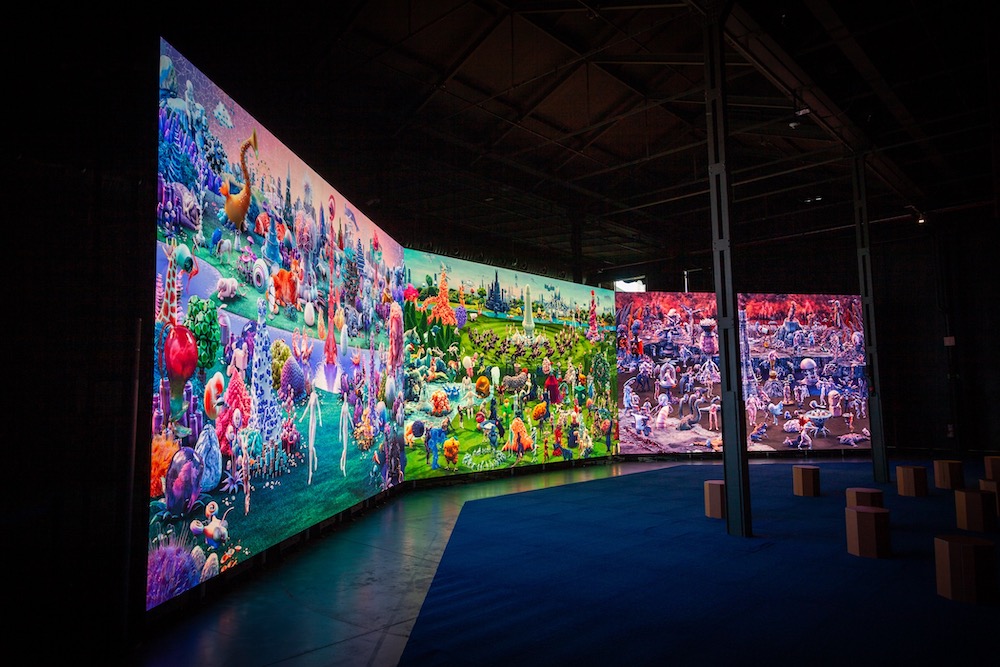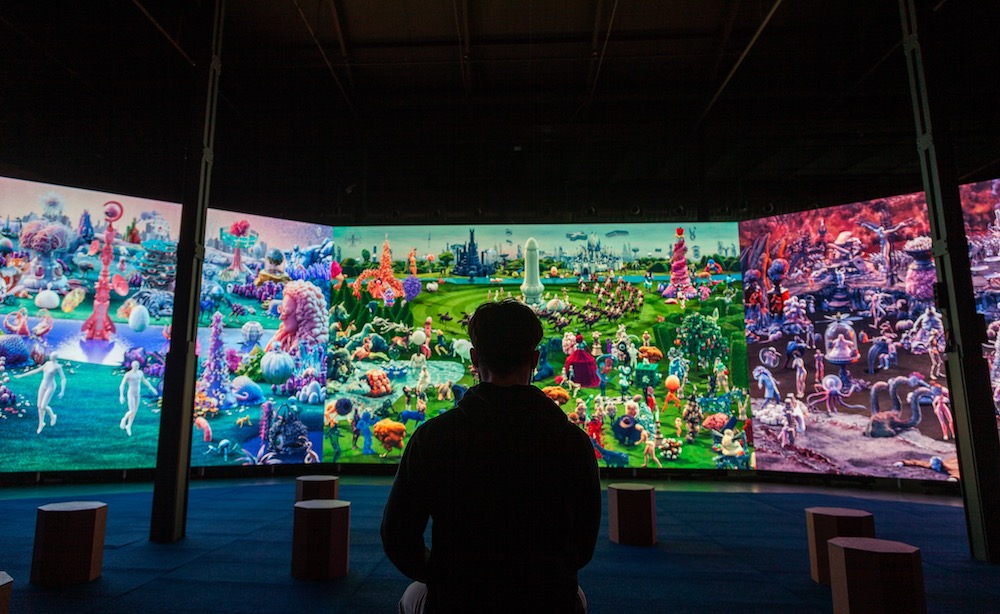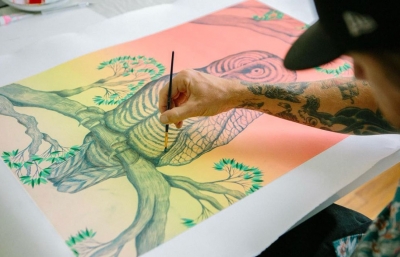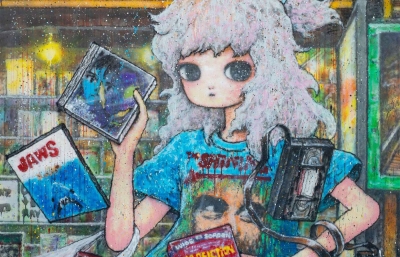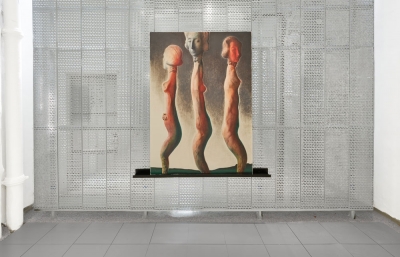On the 6th of October, we attended the opening of an exciting new multimedia project by Colección SOLO, a group exhibition entitled The Garden of Earthly Delights in Madrid. Inspired by Hieronymus Bosch's celebrated masterpiece, the presentation which will stay on view through February 27th, 2022 provides an updated outlook, refreshed way of reading, and introduces new ways of depicting and presenting the timeless subject matter of the iconic original.
Taking place at a repurposed Matadero facility, only a few minutesan drive from the current home of the infamous 16th-century diptych, Museo De Prado, The Garden of Earthly Delights is featuring works by 15 international artists from the Colección SOLO. With the majority of the works being commissioned especially for this presentation, the maze-like space designed with sustainable cardboard panels by the award-winning architect Juan Herreros turned the former slaughterhouse into a life-size multi-sensory treat. Enabling the visitors to discover the work at their own pace, as they are moving through the light and sound-absorbing corridors, the exhibition starts with an ingenious sound installation by Enrique del Castillo. Umbráfono II is a vintage-looking optical reader which transforms patterns on 35mm film into sound, creating a polyphonic environment that sets the dream-like or trance tone for the rest of the show. This sensory treatment continues through a selection of digital works by Sholim, Cool 3D World, or Filip Custic, sculptures by Lusesita or Dustin Yellin, digital paintings by Cassie McQuater, Dan Hernandez, or Miao Xiaochun, drawings by Davor Gromilovic, or visceral installation by Carlus Padrissa, each of them inspired or evoking the ambiance and subject matter of the famed masterpiece. From Mu Pan's or Dave Cooper revisited and repainted/redrawn versions of the concept applied to their own universe of characters, settings, and concerns, all the way to Mario Klingemann's AI-powered installation.
As part of the collection's ongoing initiative Onkaos, offering practical, hands-on assistance to digital exploration of the art, the German artist developed a suite of AI algorithms that reinterpret the original work in real-time, blurring the line between imagination and computer-generated visuals. By continuously reworking the original piece, the machine pushes Bosch's famed imagination and concepts, seamlessly blending abstraction with the original work. Working under the same initiative, the Dutch collective SMACK introduced SPECULUM, a massive 21st-century iteration of the original on three huge LED screens with a total length of over 20 meters. Alongside the central panel Paradise which was created in 2016, the artist now introduced an accompanying Eden and Hell, building a monumental digital triptych overflowing with animated visuals. From references to present-day Internet-culture, political, social, economical, or environmental concerns, beauty trends, or popular culture, to revision of Bosch's interest in human's sinful physical temptation, this piece wraps up a highly stimulating tour through the labyrinth of the "garden". The exhibition is accompanied by a 160-page book, published by Colección SOLO, edited and written by Rebekah Rhodes, which explores all the featured artworks, their relationship with the original and the context of the contemporary fascination with this timeless masterpiece.
After organizing curated presentations exclusively at their permanent space Espacio SOLO, a private museum in the heart of Madrid’s “art mile", this project marks the collection's step towards expanding their efforts and broadening their activity. With a new, larger place under construction, as well as a new location planned in other regions of the country and beyond, SOLO is aiming to continue its goal to foster, support, and share the artwork of today. —Sasha Bogojev

